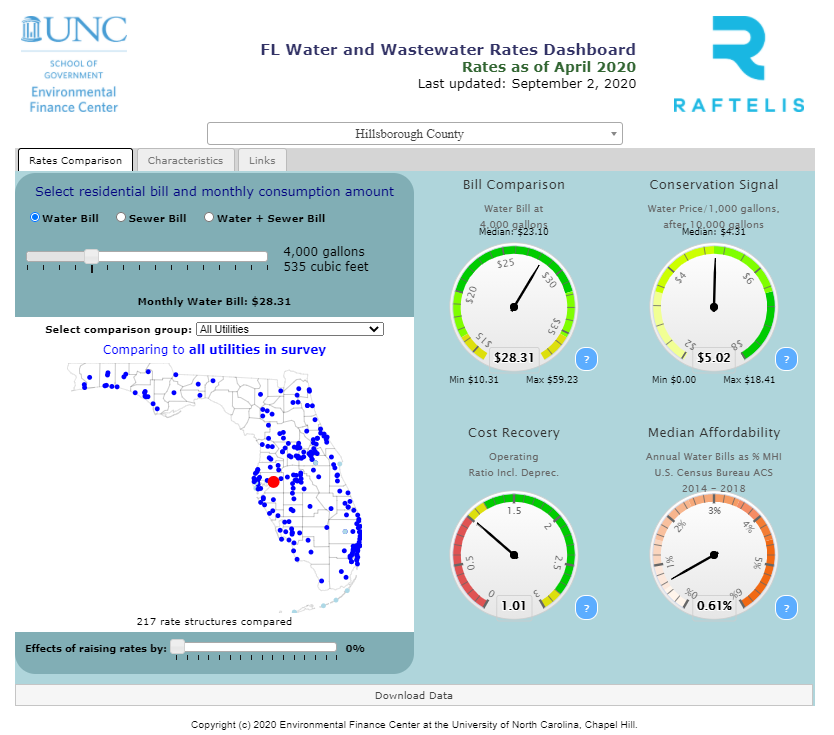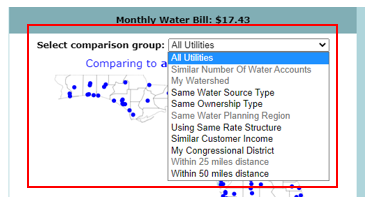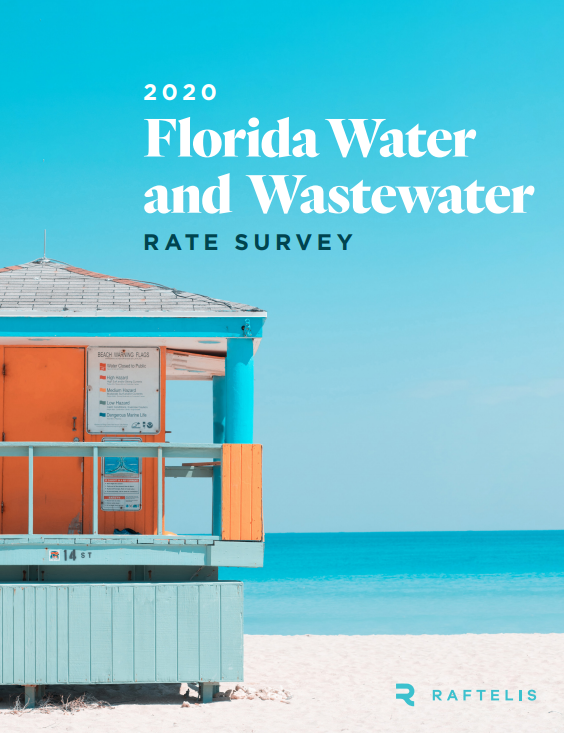Guest Post By Nicholas Smith of Raftelis
A new fiscal year typically means new water and wastewater rates for utilities in Florida. Florida utilities have long relied upon small and predictable annual rate increases to ensure their rates are sufficient to cover the cost to serve their customers. In setting rates, Florida utilities have always depended on careful financial analysis. Although COVID-19 has complicated this norm — Florida utilities can still proceed with rate changes, but it is best to proceed with some enhanced strategy. With universally high unemployment rates and utility governing bodies more concerned about affordability than ever, research by Raftelis shows utilities are moving ahead with rate increases, but they are looking for more data than before to support their decisions.
“The interest in what other utilities are doing with their rates and rates structures has always been high, especially for governing boards, who like to be sure they are aligned with peers,” said Tony Hairston, a vice president with Raftelis. “We’re seeing now that interest is even higher. Although rates are highly specific to the local utility—and it’s impossible to compare utilities on the basis of rates alone—utilities still like to look around and see what everyone else is doing.”
Raftelis has collected rate data from more than 220 utilities for years as part of Raftelis’ biennial Florida Water and Wastewater Rate Study. These data are particularly useful right now as utilities look to find the balance between the need to fund infrastructure investments and the need to minimize the financial impact to customers. Recognizing a continued need, Raftelis partnered with the Environmental Finance Center to update the 2020 Florida Water and Wastewater Rates Dashboard. 
The dashboard is a valuable tool for financial decision making for Florida utilities and allows for meaningful communication with decisionmakers. Easily use the dashboard to check how much your neighbors in the State are charging for their water and wastewater services. Use the comparison groups to compare your rates to utilities with the same water source type, the same ownership type, similar number of water accounts, and others!

The four dials on the right of the Dashboard allow you to see the residential monthly bills at various consumption levels in comparison to other utilities, the conservation signal, the cost recovery, and the annual bill as a percentage of the median household income. Unfamiliar with the definition of any of these terms? Click the blue question mark to the right of the dial for an in-depth explanation.
Want to know more? Navigate to the 2020 Raftelis Florida Water and Wastewater Rate Survey report. Data from Raftelis’ 2020 Florida Water and Wastewater Rate Survey is provided in easy-to-understand visuals with key takeaways from aggregated, statewide data. See the numbers behind the analysis! The report has a summary of trends and the answers to the questions that may be at the top of your utility’s rate priority list:
• What is the average minimum bill?
• What is the average fixed cost recovery across the state?
• How many gallons are included in the lowest usage block in other communities?
• How does our wastewater billing cap compare to utilities in the rest of the state?

If you are the appointed rates project manager at your utility, use the Download Data button on the dashboard to download the bill amounts and other utility information for the selected comparison group so you can dive into the numbers.

“We know this year, more than ever, there may be more questions about rate increases,” said Hairston. “Sometimes there can be safety in numbers. We’re definitely seeing utilities continue to be thoughtful and intentional about funding their infrastructure needs while weighing the impact to their customers.”
The resources available with these tools can help effectively communicate decisions about your utility’s position and goals for the upcoming year. Have you used our Rate Dashboard, the Raftelis report, or other tools to change your rates for the next fiscal year? Let us know in the comments below.

